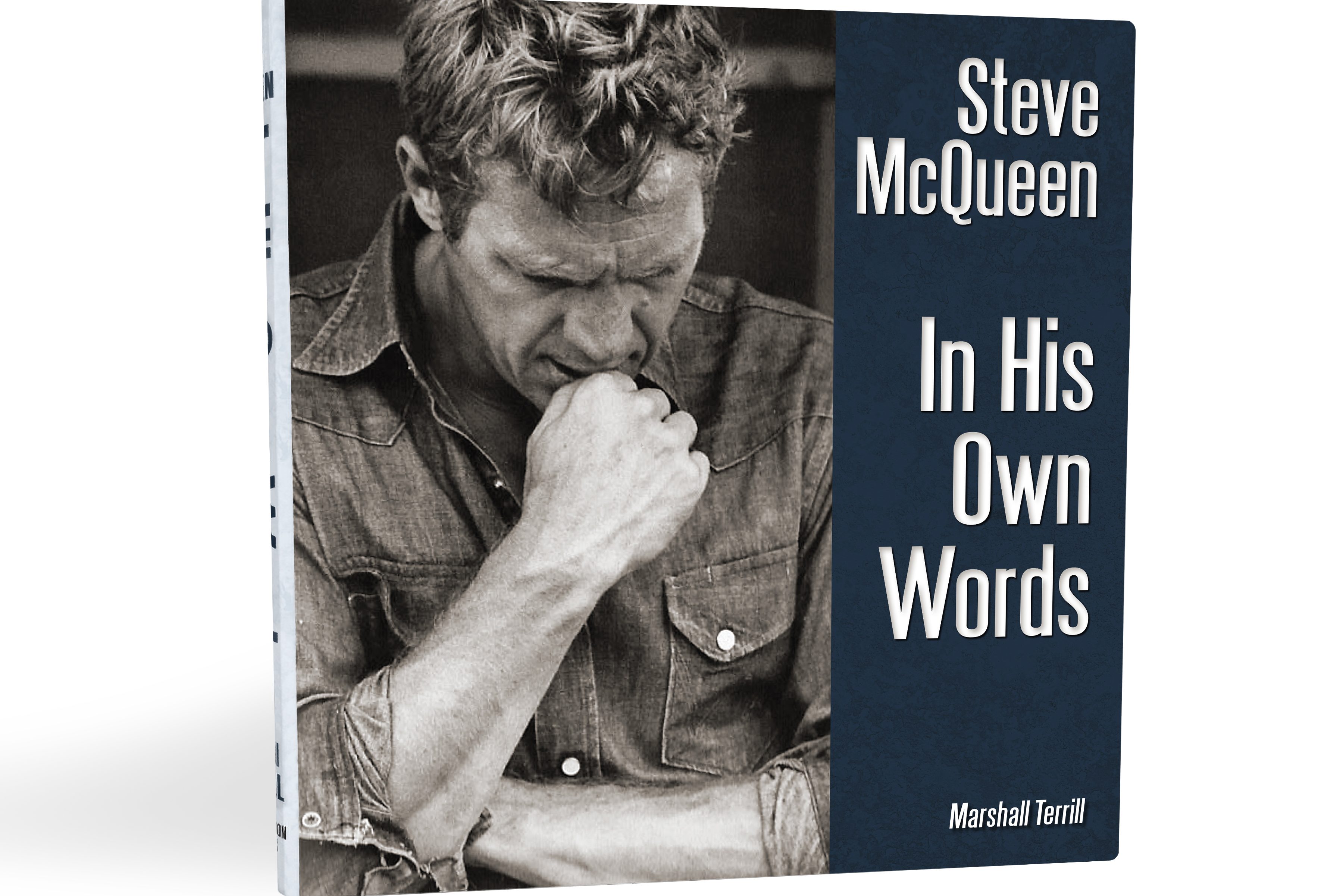Marshall Terrill, the author of six previous books about Steve McQueen, is putting out a seventh to honor of the 40th anniversary of the beloved actor’s death on November 7th. Steve McQueen: In His Own Words contains 450 quotations from McQueen himself alongside more than 500 photographs from McQueen’s early life and movie career, many of which have never been released until now. Today, we’ve got sneak peek at eight of those photos that span McQueen’s life and career, along with some background notes from Terrill to help us better understand what drove the man who would become forever known as The King of Cool.
PHOTO: MPLA
“This is McQueen’s first official acting headshot from 1952,” Terrill says. “He was 22 in this photo and fresh from his stint in the marines from 1947 to 1950. McQueen’s first acting gig was in a Yiddish play off Broadway and he had three lines. He was fired after a week. He quipped, ‘I guess it was my lousy Yiddish.’”
PHOTO: Courtesy of Marshall Terrill
“Here’s a rare and relaxed photo of McQueen standing in front of his home mailbox at 8842 Skyline Drive in Laurel Canyon, Los Angeles,” Terrill says. “The 883-square-foot home was built in 1952. At the time, McQueen was starring in CBS’s Wanted: Dead or Alive and trying to make the jump to movies.”
PHOTO: MPLA
“This is McQueen getting airborne on a motorcycle in between takes on The Great Escape, the 1963 movie that minted him a worldwide superstar,” Terrill says. “McQueen didn’t perform the famed jump over the barbed-wire fence at the end of the film — that was Bud Ekins — but many said he had the skills to do so, as evidenced in this photo.”
PHOTO: Courtesy of Marshall Terrill
“Here’s McQueen shooting pool inside The Castle, his Spanish-Mediterranean stone mansion in Brentwood, California, just north of Sunset Boulevard,” Terrill says. “His custom pool table was placed in a sunken living room in their 5,560-square-foot house, which he purchased in February 1963. At the time, he said he could barely afford the five-bedroom home, which cost $250,000. Today it is worth more than $10 million.”
PHOTO: Courtesy of Warner Brothers
“Bullitt is the defining movie of McQueen’s illustrious film career,” Terrill says. “McQueen played a cop-against-type and created a highly nuanced and complex character who was not a clear-cut law enforcement officer, but his own man. The movie grossed close to $80 million in 1968 dollars and minted McQueen as a bona-fide superstar. The film’s car chase, which featured speeds up to 125 MPH, is still considered the greatest of all-time.”
PHOTO: Don Nunley
“Le Mans (1971) had been marinating inside of McQueen’s head for a good decade (he originally wanted French actress Brigette Bardot to co-star), and he waited patiently until he had ‘the juice’ to get it off the starting grid,” Terrill says. “He not only wanted to show his love and admiration for the sport, but introduce it to the masses. Today it is considered the most authentic racing picture in motion picture history.”
PHOTO: Courtesy of Marshall Terrill
“McQueen rode motorcycles as a form of release,” Terrill says. “He was naturally wound tight and said dirt-bike racing made him ‘release all the garbage’ from his system. McQueen learned from the best: one of his closest friends was motorcycle legend Bud Ekins.”
PHOTO: Barbara Minty
“Widow Barbara McQueen took this picture of her husband reading in the backyard of their Santa Paula home in mid-1980,” Terrill says. “He had been diagnosed with cancer a few months and this was the last photo she snapped. McQueen passed a few months later on November 7, 1980.
This article appeared in an InsideHook newsletter. Sign up for free to get more on travel, wellness, style, drinking, and culture.
